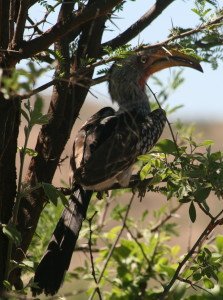Hectic catches by exceptional Lions lead them to victory 0
T20 cricket is renown for spectacular catches, but our DP World Lions men’s team were nevertheless exceptional in the field, taking some truly hectic grabs, during their 47-run win over the Free State Knights in their CSA T20 Challenge match in Bloemfontein in midweek.
Electing to bat first, our DP World Lions cobbled together 142 for seven, thanks to an all-round batting effort led by Wandile Makwetu (40 off 34 balls) and captain Mitchell van Buuren (32 off 22). It was a decent score in the conditions, but not an unbeatable one.
The Knights had taken some superb catches in the field, but #ThePrideOfJozi raised the bar even higher as the fielders backed up a clinical bowling effort with some magnificent takes.
There were three stunning catches inside the powerplay as our DP World Lions reduced the Knights to 24 for five after six overs.
Dangerman Rilee Rossouw was removed for just 6 as Connor Esterhuizen dived full length at cover to intercept a fierce blow off Tshepo Moreki in spectacular fashion. Delano Potgieter then took a brilliant running catch at third man to dismiss Garnett Tarr for a duck off Evan Jones, who three balls later snaffled an outstanding return catch, lunging forward and to his left, to get rid of Dian Forrester, also for a duck.
Former Protea Gihahn Cloete was digging in for the Knights, but Josh Richards rushed in from point and scored a direct hit from side-on to run him out for 17. Jones also effected an impressive run out with a massive throw from deep cover, athletically taken by wicketkeeper Makwetu, to remove Free State captain Dane Piedt (2).
It was Makwetu who then capped the outstanding fielding display and wrapped up the innings with a marvellous low, one-handed catch diving to his left to dismiss Malusi Siboto (1) off Liutho Sipamla, the home side being bundled out for 95 inside 18 overs, earning the DP World Lions a bonus point win.
“It was really cool to see that standard of fielding,” head coach Russell Domingo said. “Jimmy Kgamadi has worked really hard on the team’s fielding and he deserves a lot of the credit. His coaching is showing rewards because the guys have bought into the intensity. There’s been a big improvement because fielding was not our strength last season.
“The players understand how fortunate they are to have this opportunity to play with our big players away, and it’s a really good environment in the squad at the moment. They’re really embracing our mantra of enthusiasm and intensity,” Domingo said.
While the coaching staff are loving the efforts of the replacement players – they have steered #ThePrideOfJozi to second on the log, just one point behind the Northerns Titans – some of those big names are now returning from Proteas duty and should see action when the DP World Lions take on Boland in Paarl on Saturday.
Given the venue for their fifth match of the campaign, Domingo is particularly pleased that spinners Bjorn Fortuin and Nqaba Peter are making a timely return to the Pride.
“Paarl is generally a low-scoring venue and spin comes into play, there’s never much pace down there. So it will be great to have Nqaba and Bjorn back available.
“But Junaid Dawood has done a fantastic job as our frontline spinner. He was very good last season when he had a couple of opportunities to play and I’m very pleased for him because he has put in a lot of effort and stayed patient for his chance,” Domingo said.
The 28-year-old leg-spinner is the joint-highest wicket-taker in the competition with 10.





